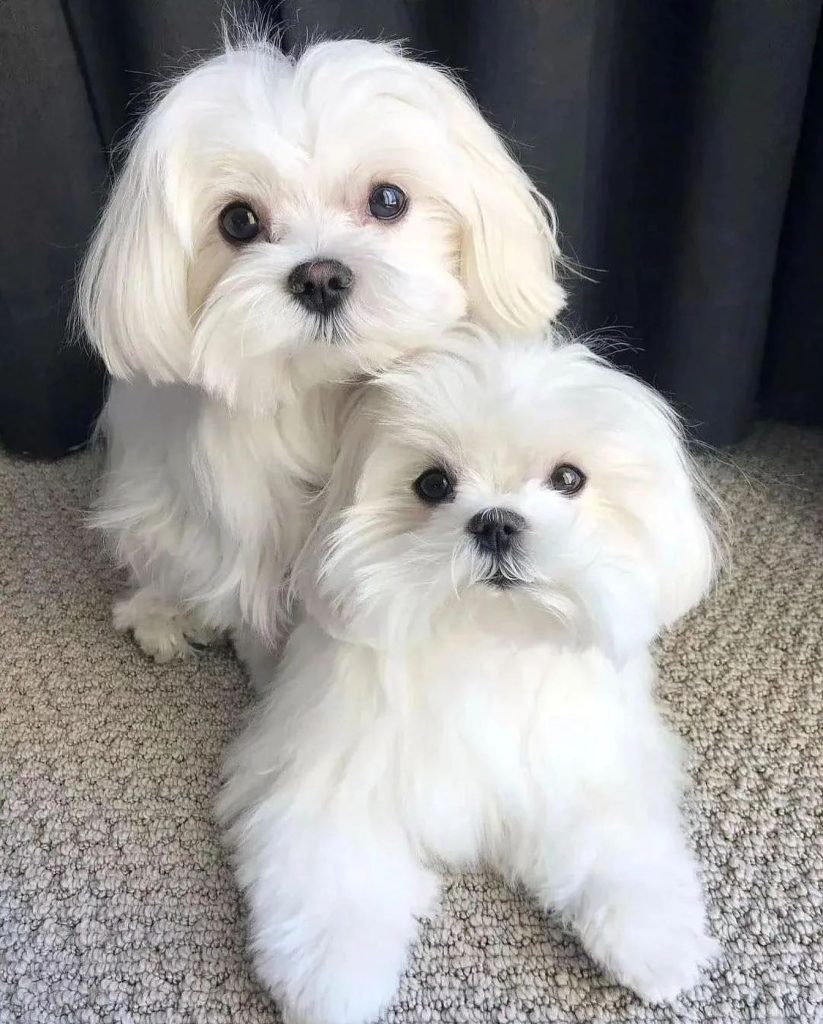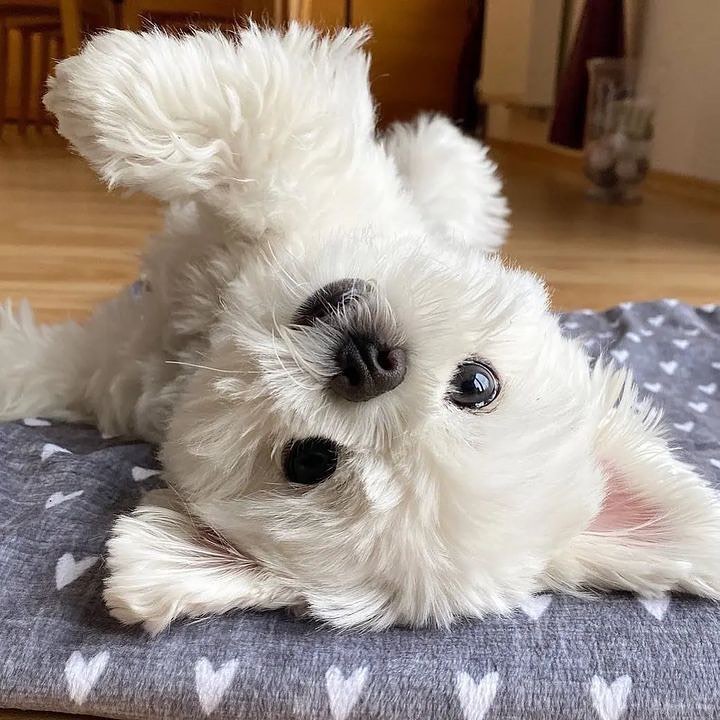
Introduction to the Maltese Breed
The Maltese dog, known for its luxurious white coat and gentle demeanor, has captured the hearts of dog lovers worldwide. Originating from the Mediterranean island of Malta, this breed has a rich history dating back over 2,000 years. Renowned for their aristocratic bearing, Maltese dogs were the favored pets of royalty and nobility throughout the ages. Despite their regal past, Maltese dogs have adapted well to modern living, making them one of the most popular toy breeds.
The Maltese breed stands out not only for its striking appearance but also for its vibrant personality. These dogs are known for their spirited and playful nature, forming strong bonds with their human companions. Their intelligence and eagerness to please make them highly trainable, although they can have a stubborn streak. Maltese dogs are also known for their vocal nature, often alerting their owners to unusual activities around their home.
One of the most appealing aspects of the Maltese is their size. Typically weighing less than seven pounds, their diminutive stature makes them ideal companions for those living in apartments or homes with limited space. Despite their small size, they are hardy and adaptable, capable of enjoying both leisurely walks and spirited playtime.
Essential Quick Facts
- Size: Small, typically 4-7 pounds in weight.
- Coat: Long, silky, and pure white, requiring regular grooming.
- Lifespan: 12-15 years, with some living even longer.
- Temperament: Affectionate, playful, and alert.
- Training: Highly trainable but can be stubborn.
- Exercise Needs: Moderate; enjoys walks and playtime.
- Health: Generally healthy but prone to certain genetic conditions.
- Best Suited For Families, singles, and seniors, especially those living in apartments.
Visual Gallery of Maltese Dogs
A visual gallery of Maltese dogs showcases their elegant white coats, expressive eyes, and graceful movements. These images capture the essence of the Maltese breed, highlighting their beauty and charm. From their luxurious fur to their playful antics, each picture tells why Maltese dogs are cherished by so many.
The Maltese in Detail
Delving deeper into the characteristics of the Maltese breed reveals much about their appeal. These dogs are not just about looks; they possess many qualities that make them excellent companions.
The Appearance of Maltese
The Maltese is instantly recognizable by its striking white coat that flows to the ground if left untrimmed. This hallmark feature complements a compact body that exudes elegance and balance. The breed’s expressive, dark, round eyes and black button nose are set against the stark white of their fur, giving them an endearing appearance that many find irresistible.
Standing about 7 to 9 inches tall at the shoulder, the Maltese’s small size belies its robust personality. Their heads are proportionate to their bodies, with a slightly rounded skull and a medium-length muzzle. Ears are dropped and feathered, framing the face and adding to their gentle expression.
The tail of a Maltese is another distinctive feature, carried gracefully over the back and covered in dense, long fur, creating a beautiful plume effect. The overall appearance of a Maltese is one of refined grace, with every aspect of their physique contributing to a look of aristocratic elegance.
Personality Traits and Temperament
The Maltese breed is known for a personality as attractive as its physical appearance. Key traits include:
- Affectionate: They thrive on human interaction and are known to form strong bonds with their owners.
- Intelligent: Quick learners, Maltese can be trained to perform a variety of tricks and tasks.
- Lively: Full of energy and spunk, they love to play and engage in activities.
- Gentle: Maltese are known for their soft and gentle nature, making them great companions.
- Alert: With a keen sense of their surroundings, they make excellent watchdogs, often alerting their owners to unfamiliar sounds.
- Adaptable: They adjust well to different living situations, whether it’s an apartment in the city or a house in the country.
- Stubborn at times: Their intelligence can sometimes translate into stubbornness, requiring patience and consistent training.
Understanding the Maltese’s appearance and personality is essential for anyone considering this breed as a companion. Their elegant looks and vibrant and affectionate temperament make them a beloved choice for many dog enthusiasts.

Adaptability and Living Conditions
The adaptability of the Maltese breed to various living conditions is one of its most appealing traits, making it a versatile companion for a wide range of lifestyles. Understanding how this breed adjusts to different environments and owner experiences can help potential owners make informed decisions.
Suitability for Apartment Living
Maltese dogs are remarkably well-suited to apartment living. Their small size means they only require a little space to be happy and healthy. Furthermore, their exercise needs can be met with indoor play and short walks, which is ideal for the confined space of an apartment. However, their vocal tendency can be considered in close living quarters, though this can often be managed with proper training and socialization.
Compatibility with Different Owner Experience Levels
One of the Maltese breed’s strengths is its compatibility with owners of varying experience levels. For first-time dog owners, the Maltese can be a forgiving companion, responsive to training due to their intelligence and desire to please. Experienced owners will appreciate the breed’s capacity for learning more advanced commands and tricks. Regardless of the owner’s experience level, a commitment to gentle, consistent training and socialization is vital to nurturing a well-behaved Maltese.
Response to Various Weather Conditions
Maltese dogs are sensitive to extreme weather conditions. Their luxurious coat provides some protection against the cold, but they are primarily indoor dogs and should not be exposed to harsh weather for extended periods. In colder climates, they may require additional warmth, such as sweaters, during outdoor excursions. Conversely, in hot weather, their thick coat can make them prone to overheating. It’s essential to provide a relaxed, shaded environment and plenty of fresh water to prevent heat stress.
The Maltese breed’s adaptability to different living conditions, compatibility with various owner experience levels, and specific needs in response to weather conditions make it a versatile and endearing choice for many potential dog owners.
Social Dynamics and Family Interaction
The Maltese breed is renowned for its friendly nature and ability to integrate seamlessly into family life. These dogs are not just pets but become cherished family members, forming deep bonds with their owners.
Relationship with Family and Children
Maltese dogs are known for their affectionate demeanor, making them excellent companions for families. They thrive on attention and love being involved in family activities. Regarding children, Maltese can be great playmates, provided the play is gentle and respectful. Due to their small size, it’s important to supervise interactions with very young children to ensure the safety of both the dog and the child.
Interaction with Other Dogs and Pets
With proper socialization, Maltese dogs can get along well with other dogs and pets. They are generally friendly and can enjoy the company of their fellow canines. However, their small stature means they might be intimidated by larger dogs, so managing introductions and interactions carefully is essential. When introduced properly, Maltese can coexist peacefully with various animals, making them a versatile addition to a pet-inclusive home.
Health, Grooming, and Physical Needs
The Maltese breed, while relatively low-maintenance in some areas, has specific requirements for health, grooming, and physical activity. Addressing these needs is crucial for maintaining the overall well-being of these charming companions.
Grooming Requirements and Shedding
The Maltese are known for their beautiful, flowing white coats, which require regular maintenance to keep them looking their best. Key grooming practices include:
- Regular brushing: Daily brushing prevents tangles and mats, especially for Maltese with longer coats.
- Bathing: A monthly bath can help keep their coat clean and white, although some may require more frequent baths depending on their lifestyle.
- Eye care: Regular cleaning is important to prevent tear staining.
- Dental care: Regular dental check-ups and teeth cleaning to prevent dental issues common in small breeds.
- Nail trimming: Keeping nails trimmed to avoid discomfort and mobility issues.
Despite their luxurious coats, Maltese are known for being low shedders, which is a plus for those concerned about pet hair in the home.

General Health and Wellness
Maltese are generally healthy dogs, but like all breeds, they are prone to certain health conditions. Regular veterinary check-ups are essential for early detection and management of issues such as dental problems, luxating patella, and certain eye disorders. A balanced diet, clean water, and preventive care are fundamental to their long-term health.
Exercise Requirements and Energy Levels
Maltese dogs possess a lively and spirited energy that requires regular outlet despite their small size. Daily walks, play sessions, and indoor activities can meet their exercise needs. It’s also important to provide mental stimulation, as Maltese are intelligent dogs who enjoy interactive toys and games. Adequate exercise helps prevent behavioral issues and supports overall health, making it essential to care for these active little dogs.
Training and Behavioral Aspects Of Dog Breed
Training and managing behavioral aspects are key to ensuring a harmonious relationship between Maltese dogs and their owners. Their intelligence and eagerness to please make the Maltese breed a joy to train, yet they come with challenges like any breed.
Trainability and Intelligence
Maltese dogs are brilliant and responsive, which makes them excellent candidates for training. They are quick learners and can master basic commands and more complex tricks with relative ease. Positive reinforcement techniques such as praise, treats, and play are particularly effective, encouraging them to engage enthusiastically in training. Their keen intelligence, however, means they can sometimes be too clever for their excellent, requiring consistent and patient training to ensure they understand boundaries and expectations.
Addressing Behavioral Challenges
Despite their many positive traits, Maltese can exhibit typical small dog behavioral issues such as excessive barking, separation anxiety, and stubbornness. Addressing these challenges requires firm yet gentle training, consistent socialization, and adequate mental and physical stimulation. Early intervention and consistent training routines can help mitigate these behaviors, ensuring that the Maltese remains a well-mannered and enjoyable companion.
Special Considerations for Owning a Maltese
Owning a Maltese dog comes with unique considerations that potential owners should weigh carefully. From the decision to adopt or purchase to understanding their hypoallergenic qualities, each factor plays a significant role in ensuring a successful integration into the family.
Choosing a Maltese: Adoption vs. Purchase
When welcoming a Maltese into your home, one of the first decisions is whether to adopt or purchase from a breeder. Here’s a comparison to help guide your choice:
| Aspect | Adoption | Purchase |
| Cost | Generally lower, covering adoption fees. | Higher, reflecting breeder’s pricing. |
| Background | May need more information on history and health. | Detailed history and health records are available. |
| Age | Range of ages, including adults. | Often puppies. |
| Support | Support from shelters/rescue groups. | Breeder support, especially for first-time owners. |
| Selection | Limited choice in terms of age, size, and color. | More comprehensive selection, including specific lines. |
Choosing between adoption and purchasing from a breeder depends on individual preferences, circumstances, and the importance of factors like background information and age.
Hypoallergenic Qualities and Allergies
The Maltese breed is often touted for its hypoallergenic qualities, making it a popular choice for allergy sufferers. Their hair-like coat produces less dander than many other breeds, a common allergen. However, it’s important to note that no dog is entirely hypoallergenic. Spending time with Maltese before committing can help determine individual allergic reactions.
Pros and Cons of Owning a Maltese
Owning a Maltese comes with a blend of advantages and challenges. Their small size, affectionate nature, and intelligence make them delightful companions. They fit well in various living situations and are generally good with families and pets. However, their grooming needs are significant, and they can be prone to specific health issues and behavioral quirks like separation anxiety and barking. Balancing these factors is key to a rewarding relationship with Maltese.
In-depth Exploration of the Maltese
Historical Background and Evolution
The Maltese breed boasts an ancient lineage, with roots tracing over 2,000 years to the Mediterranean region. Revered by aristocrats and often depicted in Greek and Roman art, the Maltese has maintained its esteemed status throughout history. Initially bred for companionship, their small size and generosity made them favorites among the nobility. Over centuries, selective breeding emphasized their signature white coat and petite stature. Despite evolving trends, the Maltese has preserved its distinctive characteristics, embodying the elegance and charm that have captivated admirers since antiquity.

Caring for Your Maltese
Proper care for Maltese involves a comprehensive approach that includes nutrition, health maintenance, and training. These elements are crucial for their well-being and happiness.
Nutritional Guidelines
- Balanced Diet: Provide a high-quality, balanced diet suited for small breeds. Include proteins, carbohydrates, fats, vitamins, and minerals.
- Feeding Schedule: Maintain a regular feeding schedule, usually twice daily, to avoid overeating and obesity.
- Fresh Water: Ensure constant access to fresh, clean water.
- Special Needs: Be mindful of dietary needs that may arise due to health conditions or age.
Health Care and Maintenance
- Regular Vet Check-ups: Schedule annual check-ups to monitor health and keep vaccinations current.
- Dental Care: Implement a dental care routine, including brushing teeth and regular dental check-ups, to prevent common dental issues.
- Preventative Medications: Keep up with preventative treatments for fleas, ticks, and heartworms.
- Grooming: Regular grooming is essential for appearance and overall health, preventing skin issues and maintaining coat health.
Training and Socialization Tips
- Early Socialization: Expose your Maltese to various people, animals, and environments early to build confidence and social skills.
- Positive Reinforcement: Use rewards and praise to encourage good behavior, making training sessions enjoyable and effective.
- Consistency: Be consistent with commands and rules to avoid confusion and ensure successful training.
- Patience: Understand that training takes time. Be patient and persistent for the best results.
Caring for Maltese requires attention to their needs but is ultimately rewarding, leading to a healthy, happy, and well-adjusted companion.
The Maltese Dog Community
Rescue Groups and Breed Organizations
The Maltese community is a vibrant and supportive network, with numerous rescue groups and breed organizations dedicated to the welfare of these charming dogs. These entities play a crucial role in advocating for the breed, offering resources for current and prospective owners, and providing care for Maltese in need. Rescue groups often focus on rehabilitating and rehoming Maltese dogs that have been abandoned, neglected, or surrendered, ensuring they find loving forever homes. On the other hand, breed organizations work to preserve the breed’s standards, educate the public about the Maltese, and often support health research and rescue efforts. These groups form a supportive community for the dogs and their owners, fostering a sense of belonging and mutual support.

Conclusion
The Maltese breed, with its rich history, captivating charm, and affectionate nature, offers a unique, rewarding, fulfilling companionship. From their luxurious white coats to their lively and loving personalities, Maltese dogs have secured a special place in the hearts of dog lovers worldwide. Prospective and current owners alike are encouraged to embrace the responsibilities of Maltese care, from grooming and health maintenance to training and socialization. By doing so, they ensure these delightful companions lead happy, healthy lives, further enriching the bond between humans and canines.
